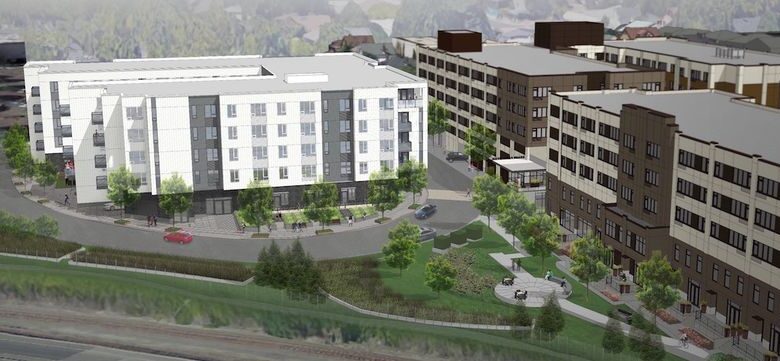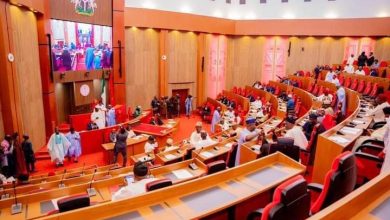Access to affordable housing finance in Kenya: An exploration of investment prospects in Kenya’s housing finance market

Housing is more than just four walls and a roof. It is the foundation of a family’s aspirations for better living standards and economic growth. Kenya’s population is steadily growing, which has led to increased housing demand. Yet, for LMI families, affordable housing remains unattainable. Approximately 60% of Kenya’s urban residents, which includes people like Anna, live in 498 slums and informal settlements. Meanwhile, an annual housing deficit of around 200,000 housing units persists.
READ ALSO: Head of Service inaugurates Committee for Staff Housing Cooperative
Housing finance is the key to transform people’s aspirations of home ownership into reality. However, mortgages are not accessible to most LMI earners. They face several barriers, such as high interest rates, expensive building materials, and the need for formal documentation.
Habitat for Humanity Kenya Report 2023 reveals that only 8% of Kenyan urban residents have access to housing finance. This highlights the daunting challenges individuals like Anna face, who represent a significant portion of the population. Only 29.2% of the informally employed population can access housing finance. These recent statistics reveal the gravity of the situation. This calls for an exploration of possibilities needed to tap into the potential for investments in housing finance.
The supply-side perspective
Financing affordable housing for the LMI population is complex because of the following reasons:

Given the above supply-side challenges, formal financing for the LMI population is largely limited. So, how do we promote housing for the LMI segment? Affordability is a paramount concern. The monthly payments surpass the financial means of most LMI households despite the availability of mortgages.
Opportunities for donor investment in housing finance to promote financial inclusion
An effective housing market can emerge in Kenya if housing finance products are adequately available. These products should improve housing affordability and overcome barriers to access and use of housing finance, which makes housing unaffordable for most people. Below, we look at different short-, medium-, and long-term opportunities for donors, investors, and private sector engagement.

Figure 1: Key recommendations to improve access to housing finance through donor investments
- Data management and research: Data gaps in information can be addressed with updated databases to close the housing finance data gap and improve risk assessment. This can be achieved through the development of an open data portal, data tracking and supervision activities, regular national surveys every two to three years, and collaborations with partners, such as FinAccess, for inclusive housing finance information.
- Risk mitigation and partnership development: Public-private partnerships can be used to de-risk housing finance and encourage private sector investment. A housing finance credit guarantee fund could potentially de-risk housing credit for lenders and make credit more accessible through increased supply for low-income borrowers. Increased collaboration between stakeholders could help boost housing finance availability. For example, governments could partner with developers to offer subsidized mortgages and pre-financing options for developers. Partnerships with technology-enabled property valuation services, such as ibuild, can also improve efficiency and accuracy in property value assessments, which reduces risks for lenders.
- Digitization and credit scoring: Kenyan financial institutions can improve access to housing finance and overcome critical challenges in the housing sector through technology-driven solutions. Data-driven alternative credit scoring mechanisms, which use automated underwriting systems and advanced analytics to assess individuals without regular incomes, can emerge. This can enable more efficient credit assessments and inclusive lending, facilitate faster loan approvals, and broaden access to housing finance. New digital platforms and FinTechs, such as ibuild, can help MSMEs build their credit scores, facilitate peer-to-peer lending, connect borrowers with investors, promote embedded finance, and expand access to housing finance, which is particularly beneficial for MSMEs.
- Capacity-building initiatives and financial education programs: The provision of technical assistance programs for financial institutions can enhance their capabilities when they offer housing finance and address supply-side capacity constraints. These constraints include gaps in skills and data or information availability. A recent meta-study demonstrates that traditional approaches to financial education have had limited impact. The development of financial education programs that incorporate behavioral insights for LMI end-users and are delivered at “teachable moments” is essential to overcome barriers and promote positive financial behavior. Investments in consumer education as part of product marketing could improve uptake.
- Supply chain strengthening: Kenya’s housing construction value chain remains underdeveloped. The development of the housing value chain through optimization of phases, such as land acquisition, construction, marketing, and property management, may potentially enhance efficiency, reduce costs, and improve quality. This process could potentially generate additional tiers in the housing ladder, better align with a broader demand base, and potentially generate new lending prospects. MSMEs often supply building materials, services, and labor. Donor investments in these enterprises could potentially help develop a more robust and reliable supply chain for housing construction and ensure consistent availability of affordable building materials, which include eco-friendly construction materials. This, in turn, could lower construction costs and make housing more affordable for LMI families.
- Incremental housing construction: Several housing finance experts have outlined the opportunities in incremental housing finance. SACCOs and MFIs in Kenya offer micro-mortgages and are already adopting incremental lending models. This includes land purchases, foundational structure or first room construction, or substantial expansions. Incremental housing construction can present asset investment opportunities to low-income individuals while it opens up a new lending market for lenders (FIs) and the housing sector. It stimulates a need for subsequent loans, which include housing microloans, followed by micro-mortgages and eventually conventional mortgages, as borrowers gradually address their housing needs incrementally.
Conclusion
The move beyond traditional lump-sum mortgage payments and the breakdown of the housing value chain is essential to diversify housing finance and enhance financial inclusion. Tailored products should be created to meet diverse customer needs, which especially focus on lower-income individuals’ affordability and repayment capacity. The government, private sector, and investors need to collaborate to level the playing field for structured affordable housing finance products. This collaboration should address requirements and regulations to foster the growth of alternative financing methods for a more efficient housing finance market.
Source: Microsave





